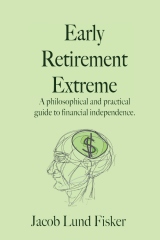Is it possible to draw a line between happiness and saving money? It certainly is. The line is drawn according to a parameter called the discount rate which is the interest rate which separates one’s desire to lend vis-a-vis borrow money.
In other words, the discount rate is the minimum interest rate one would demand to lend money out. If my discount rate is 5% or lower, then this means that
- I would rather have $105 in a year, than
- I would want to have $100 now.
Conversely, if your discount rate is 5% or higher, then this means that
- You would rather have $100 now, than
- You would want to have $105 in a year.
If so, we can do business; I will lend you $100, and you will pay me back $105 in a year and everybody is happy.
People differ in their discount rate. If you have a very high discount rate, it means you value the present more. If your discount rate is 20% or higher, you would have no problem carrying consumer credit.
My discount rate is very low, because I figure that I am [genetically] as capable of being happy in the future as I am today given the same amount of money. Thus, by lending out money at 5% I expect to be 5% happier in the future; namely, I will get to spend $5 more in the future.
Conversely, by borrowing money, I would expect to be 5% less happy in the future than now.
Before you start arguing that money doesn’t buy happiness, etc. keep in mind that the discount rate is set by the marginal dollar. If you have very little money, you value it highly in the present—every dollar buys a lot of happiness including the last one you spend. If you have a lot, you have more than you need, and you can easily postpone its use into the future—the last dollar you’d spend would create little happiness.
There are two effects which come into play now.
First, while there is no mathematical difference, consider whether your discount rate would be identical if
- You would rather have $100,000 now, than
- You would want to have $105,000 in a year.
Now, we’re talking $5,000 instead of $5. $5 is trivial, but $5,000 is not even though as a fraction is the same.
Second, compound interest will change the amount into the farther future.
- Would you rather have $100,000 now, than
- You would want to have $127,628 in five years.
Here is more on how to do a discounted cash flow analysis on student loans.
Given our high savings rates, people on the road to extreme early retirement have a much lower discount rate than most other people.
As a result, they can accumulate $100,000 and lend it out at 5%. After 5 years, they will have $127k. Now, live off the 27k for the next five years while lending out the $100k again.
The preference or psychological ability to have a lower discount rate is what allows the freedom. Another word for a low discount rate is delayed gratification. It is an extremely powerful financial weapon if used in an environment of higher rates. Consequently, no matter what happens, as long as your discount rate is lower than most other people’s discount rates, they will be giving you money, but seeing that you will both have your own optimally chosen discount rate, e.g. 6% vs 5%, you will both be equally happy. To wit, at the very bottom, that is, those who work the most for the least are those with 20% or 30% discount rates who pay that much extra for everything they buy. Conversely, at the top are those with 2-3% discount rates who are typically paid by others.
For example, my savings will pay/has paid [virtually] for the home for one upper middle class family who don’t/didn’t have the money but is willing to carry the mortgage. It is thus as if they are working to pay me because they want to live in a house they can’t afford for the next 30 years. This, then, effectively, is why I don’t have to work—they do it for me. Their discount rate is higher than mine.
Maybe it is better explained with an example.
Suppose A has $150,000 in assets and B has $150,000 in debt. Both draw 6%. Both earn $40,000 per year.
Then each year, A will have $49,000 to spend, while B will have $31,000 to spend. You could also have a person with a net worth of zero, C, who’d then have $40,000 to spend. This is not just one year, this is every year.
If the debt has to be paid off as well, then B may be paying $1250 extra per month to get rid of it in 10 years. This will cut B’s spending to $16000 per year. That’s less than 1/3 of A. Huge difference!
Overall, A will have substantially more financial freedom than B.
Any kind of substantial debt, which can not be paid off within a year, will act as a huge drag on one’s finances, simply because interests will be quite high compared to the principal to paid off—you will mainly be paying interest, while the principal debt remains the same. It’s like riding a bicycle uphill (principal) in headwind (interest).
This will be even more apparent if interest rates are higher, earnings are lower, or asset/liabilities are higher. Indeed, because of the interest bias (wind direction), it is much easier to save $100,000 than it is to pay off $100,000.
Originally posted 2010-08-21 23:13:30.

